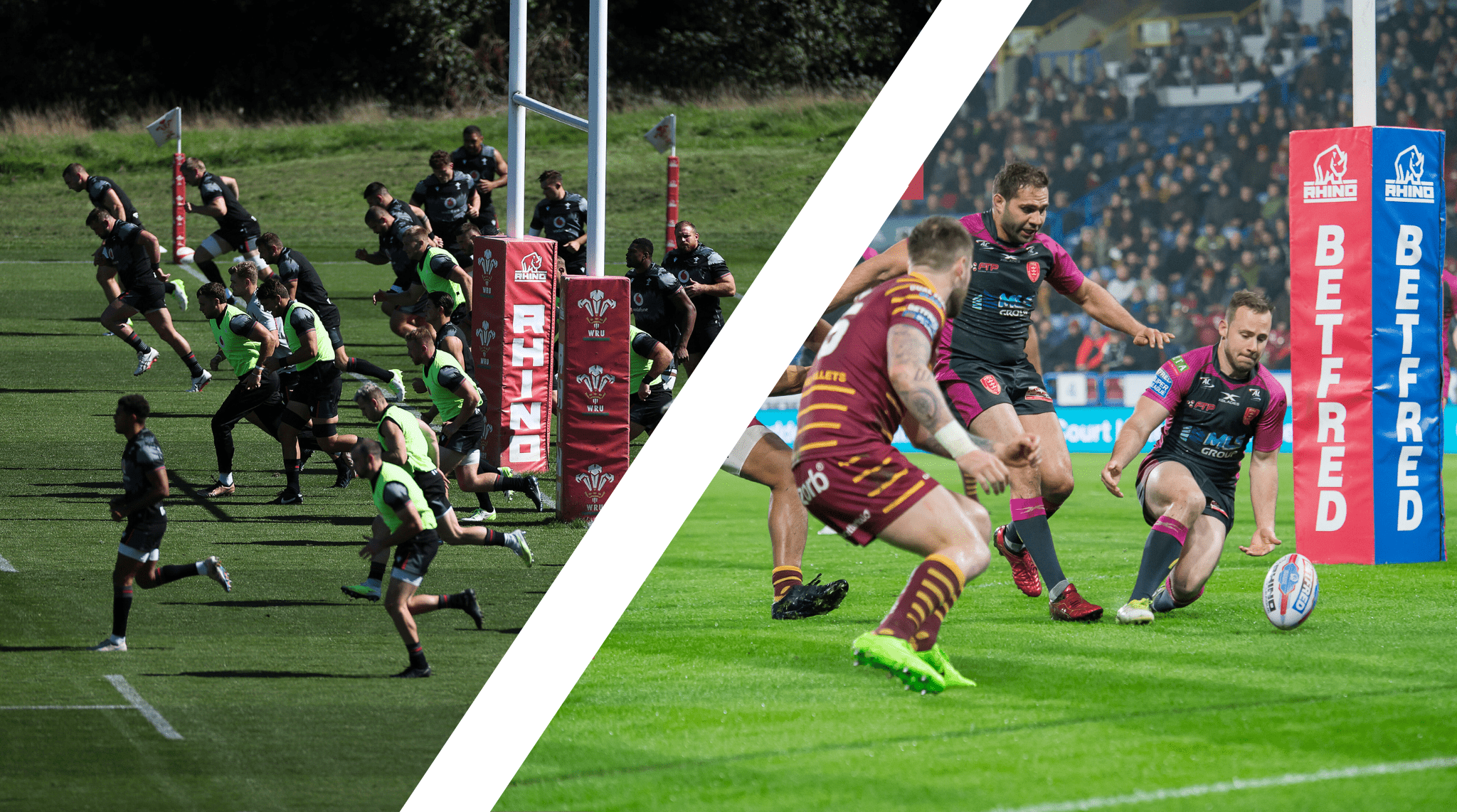Rhino offers a wide range of balls and equipment for both rugby union and rugby league, but what distinguishes rugby union from rugby league?
Although rugby union and rugby league share a common ancestry and the fundamental aim of advancing a ball over a line to score points, the difference in rules, gameplay and culture sets them apart.
Here’s a closer look at the key differences between rugby union and rugby league, and what makes each code distinct.
Origins
The split between rugby union and rugby league traces back to 1895 in Northern England. Clubs in the north, mainly representing working-class communities, were advocating for players to be compensated for missing work due to matches – a concept that was opposed by the more amateur southern clubs. This disagreement led to the formation of the Northern Rugby Football Union, eventually evolving into rugby league, with rugby union maintaining its amateur status until turning professional in 1995.
Team composition
One of the most apparent differences lies in the size of the teams and the structure of the game.
Rugby union features 15 players per side, including 8 forwards and 7 backs. Rugby league features 13 players, removing the flanker and number 8 position, which leads to a faster paced game with more emphasis on individual athleticism and ball handling skills.
Balls
1. Size and shape
There are some very subtle differences between the shape and size of both rugby union and rugby league balls.
Rugby union balls can look slightly bigger than rugby league balls, the size and shape are designed to facilitate more kicking.
Rugby league balls may look slightly thinner as they are designed to be more pointed at the ends, this is intended to make the ball easier to handle and pass, as rugby league involves more frequent passing and slightly less kicking.
Although the standard ball size for both rugby union and league is size 5, the dimensions and weight may differ slightly from rugby union balls.
2. Weight
The weight between a league and union ball is very similar, but there can be slight variations due to the design of the ball. Both are designed to optimise the type of play and conditions they will be used in.
Tackling
In rugby union, the tackle contest is a critical component, giving rise to rucks and mauls where the ball can be contested by both teams post-tackle. This aspect introduces a strategic layer to retaining possession and advancing the ball.
Rugby league simplifies this with the “six-tackle rule” where the attacking team has six attempts to score before turning over the ball. This rule encourages a more open, flowing style of play and strategic kicking to gain territorial advantage.
Scoring
While both rugby union and rugby league have similar scoring methods – tries, conversions, penalty kicks and drop goals – the points awarded for each are slightly different.
In rugby union, a try earns five points, with two points for a successful conversion. Rugby league awards four points for a try and two points for conversions. This slight adjustment in scoring reflects the pace and strategic focus of each game.
Set pieces
Rugby union is renowned for its set pieces, including lineouts and scrums, which are crucial for possession and territorial gain. These elements require specific skills and strategies.
Rugby league simplifies the scrum to a less contested form, primarily used to restart play and does not feature lineouts, opting for tap restarts and kick-ins to maintain the games faster tempo.
Worldwide reach
Rugby union has a broad international presence, highlighted by iconic tournaments like the Rugby World Cup and the Six Nations Championship. Rugby league is immensely popular in regions like Northern England, Australia and New Zealand, and features competitions like the Rugby League World Cup and the Super League.
Overall, both codes of rugby offer their own history, culture and dedicated fan-base. As the world of rugby continues to evolve, Rhino remains at the forefront of both rugby union and rugby league with innovative and quality products for training and match-day performance.
Shop Rugby League
- Shop Balls
- Shop Kicking Tees
- Shop Tackle Bags
- Shop Hit Shields
Shop Rugby Union
- Shop Balls
- Shop Kicking Tees
- Tackle Bags
- Hit Shields
- Scrum Machines
- Lineout Equipment

